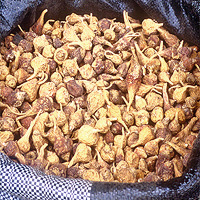Maca
 © Chris Kilham
© Chris KilhamParts Used & Where Grown
Maca is a cruciferous vegetable in the mustard family, related to radishes and turnips. Used as food and medicine in the Andes Mountains of Peru, it is not known to occur naturally anywhere else in the world. The four major cultivars of maca are red, black, cream, and purple; none has been definitely proven to be medicinally superior to any other.
- Reliable and relatively consistent scientific data showing a substantial health benefit.
- Contradictory, insufficient, or preliminary studies suggesting a health benefit or minimal health benefit.
- For an herb, supported by traditional use but minimal or no scientific evidence. For a supplement, little scientific support.
Our proprietary “Star-Rating” system was developed to help you easily understand the amount of scientific support behind each supplement in relation to a specific health condition. While there is no way to predict whether a vitamin, mineral, or herb will successfully treat or prevent associated health conditions, our unique ratings tell you how well these supplements are understood by the medical community, and whether studies have found them to be effective for other people.
For over a decade, our team has combed through thousands of research articles published in reputable journals. To help you make educated decisions, and to better understand controversial or confusing supplements, our medical experts have digested the science into these three easy-to-follow ratings. We hope this provides you with a helpful resource to make informed decisions towards your health and well-being.
This supplement has been used in connection with the following health conditions:
| Used for | Amount | Why |
|---|---|---|
Low Libido | 1,500 mg or 3,000 mg per day for 8 weeks | In a double-blind study, treatment with maca increased sexual desire in young and middle-aged men. |
Male Infertility | 1,500 to 3,000 mg daily | A small clinical trial found that healthy men who took dried maca powder had increased sperm counts and enhanced sperm motility. |
Menopause | 2.5 to 3 grams per day for 6 to 12 weeks | Traditionally used for balancing female hormones, maca appears to be beneficial in treating menopausal symptoms. |
Stress | Refer to label instructions | Studies have shown that maca can reduce the negative effects of stress. |
Traditional Use (May Not Be Supported by Scientific Studies)
Maca root has been an important food for the native people in the Andes of Peru, including the Incas, for at least 2,000 years.1 It is eaten baked, dried, mixed with milk, or in a variety of other forms and dishes. It is also traditionally believed to enhance strength, endurance, libido, and fertility.2
Copyright © 2025 TraceGains, Inc. All rights reserved.
Learn more about TraceGains, the company.
The information presented by TraceGains is for informational purposes only. It is based on scientific studies (human, animal, or in vitro), clinical experience, or traditional usage as cited in each article. The results reported may not necessarily occur in all individuals. Self-treatment is not recommended for life-threatening conditions that require medical treatment under a doctor's care. For many of the conditions discussed, treatment with prescription or over the counter medication is also available. Consult your doctor, practitioner, and/or pharmacist for any health problem and before using any supplements or before making any changes in prescribed medications. Information expires December 2025.
